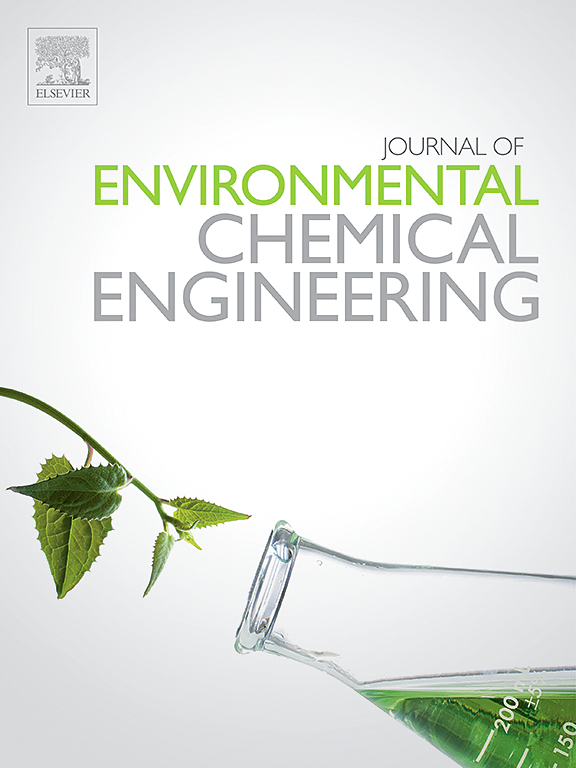生物垃圾增值:将循环经济原则与人工智能驱动的可持续能源解决方案优化相结合
IF 7.4
2区 工程技术
Q1 ENGINEERING, CHEMICAL
引用次数: 0
摘要
包括食物垃圾和农业残留物在内的生物废物在提供变革机会的同时,也构成了重大的环境挑战。传统上被填埋或焚烧的生物垃圾越来越被认为是生产生物燃料、生化物质、生物材料和动物饲料的可再生资源。本文从系统层面分析了生物废弃物的特性、转化过程和衍生生物能源产品,如生物燃料、沼气、生物柴油、生物氢、生物电和其他有价值的化学品。探索了多种转化方法,包括厌氧消化、发酵、微生物燃料电池、热解和气化,以及填埋和焚烧等传统做法。新兴的分析进步正在彻底改变生物废物的价值。人工智能(AI)和机器学习(ML)技术因其变革性影响而备受关注。例如,人工智能驱动的热解条件优化提高了生物炭的产量和质量,而使用神经网络的预测建模提高了厌氧消化的效率。此外,技术经济分析(TEA)表明,通过人工智能驱动的流程优化,运营成本显著降低,生命周期评估(LCA)量化了人工智能驱动的流程调整对环境影响的减少,如温室气体排放和能源消耗。先进的评估工具,包括物质流分析(MFA),进一步评估生物废物转化为能源系统内的资源动态。人工智能和机器学习优化废物处理,提高效率和产品质量。关键的分析工具,如TEA、LCA和MFA评估这些过程的财务和环境可行性。本文章由计算机程序翻译,如有差异,请以英文原文为准。
Biowaste valorization: Integrating circular economy principles with artificial intelligence-driven optimization for sustainable energy solutions
Biowaste, encompassing food waste and agricultural residues, poses significant environmental challenges while offering transformative opportunities. Traditionally relegated to landfills or incineration, biowaste is increasingly recognized as a renewable resource for producing biofuels, biochemicals, biomaterials, and animal feed. This review offers a systems-level analysis of biowaste characteristics, conversion processes, and derived bioenergy products such as biofuels, biogas, biodiesel, biohydrogen, bioelectricity, and other valuable chemicals. Diverse conversion methods are explored, including anaerobic digestion, fermentation, microbial fuel cells, pyrolysis, and gasification, alongside conventional practices like landfilling and incineration. Emerging analytical advancements are revolutionizing biowaste valorization. Artificial intelligence (AI) and machine learning (ML) techniques are highlighted for their transformative impact. For example, AI-driven optimization of pyrolysis conditions has enhanced biochar yield and quality, while predictive modeling using neural networks has improved the efficiency of anaerobic digestion. Additionally, techno-economic analysis (TEA) demonstrates a significant reduction in operational costs through AI-driven process optimization, and life cycle assessment (LCA) quantifies reductions in environmental impacts, such as greenhouse gas emissions and energy consumption, due to AI-informed process adjustments. Advanced assessment tools, including material flow analysis (MFA), further evaluate resource dynamics within biowaste-to-energy systems. Artificial intelligence and ML optimize waste processing, improving efficiency and product quality. Key analytical tools like TEA, LCA, and MFA assess the financial and environmental viability of these processes.
求助全文
通过发布文献求助,成功后即可免费获取论文全文。
去求助
来源期刊

Journal of Environmental Chemical Engineering
Environmental Science-Pollution
CiteScore
11.40
自引率
6.50%
发文量
2017
审稿时长
27 days
期刊介绍:
The Journal of Environmental Chemical Engineering (JECE) serves as a platform for the dissemination of original and innovative research focusing on the advancement of environmentally-friendly, sustainable technologies. JECE emphasizes the transition towards a carbon-neutral circular economy and a self-sufficient bio-based economy. Topics covered include soil, water, wastewater, and air decontamination; pollution monitoring, prevention, and control; advanced analytics, sensors, impact and risk assessment methodologies in environmental chemical engineering; resource recovery (water, nutrients, materials, energy); industrial ecology; valorization of waste streams; waste management (including e-waste); climate-water-energy-food nexus; novel materials for environmental, chemical, and energy applications; sustainability and environmental safety; water digitalization, water data science, and machine learning; process integration and intensification; recent developments in green chemistry for synthesis, catalysis, and energy; and original research on contaminants of emerging concern, persistent chemicals, and priority substances, including microplastics, nanoplastics, nanomaterials, micropollutants, antimicrobial resistance genes, and emerging pathogens (viruses, bacteria, parasites) of environmental significance.
 求助内容:
求助内容: 应助结果提醒方式:
应助结果提醒方式:


